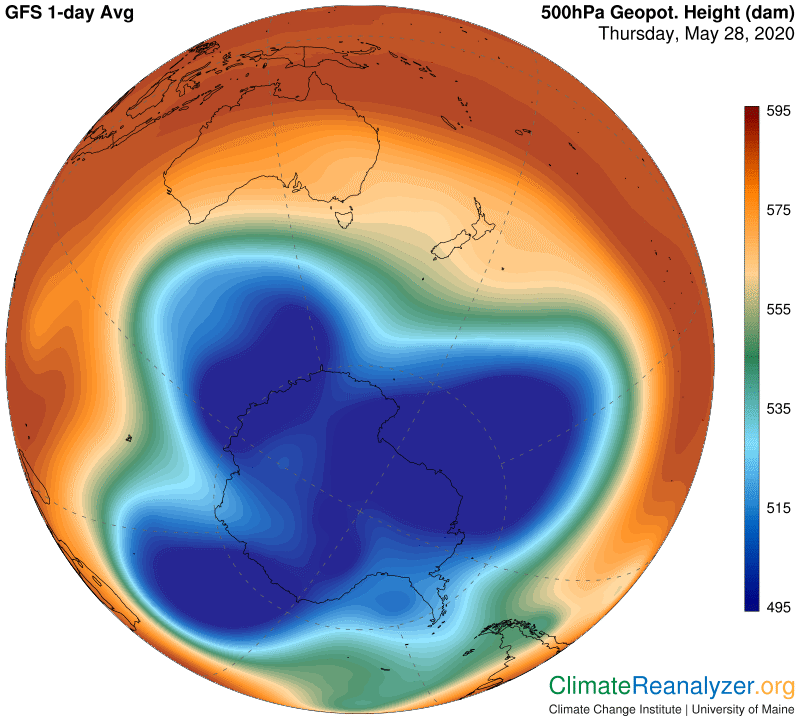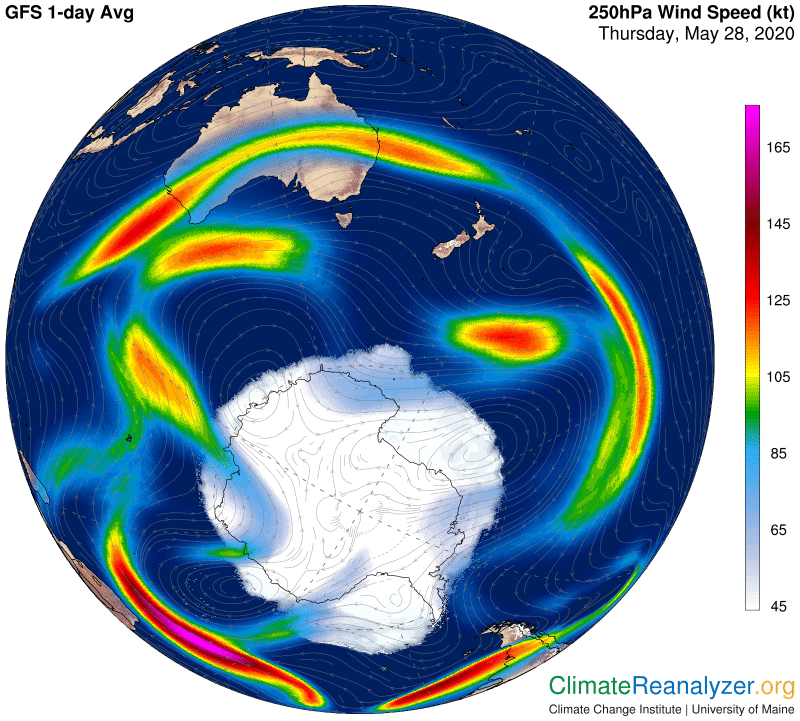I need to quickly add a few words of follow-up to yesterday’s letter regarding jetstream activity, where it was noted that little or no high-speed wind was being recorded along the line reserved for the “perimeter” pathway. This is the one which I’ve said exists continuously within the red shaded zone where dark red changes fairly abruptly to a lighter shade, as seen at about the 575-580hPa altitude on the map. What does it mean if nothing is there to be seen? Today, on that same view, the same long stretch is again almost entirely vacant of jets, but let’s see what is happening on a different image from the exact opposite side of the region. We need to first show air pressure configuration to establish the location:

Here the pathway situated within color-code 575-580 forms an almost perfect curve, in contrast to the very bumpy situation seen yesterday on the opposite side. Having a smooth curve allows the isobars to remain tight, facilitating higher wind speeds, and that is exactly what we get, as this next image shows:

The lesson here is that isobars along this jetstream pathway, and the two other main pathways as well, tend to widen out when there are sharp bends in the path, and whenever there is widening the wind speed will drop. When the bends are sharp enough the wind speed can drop so low that no jet is recorded, and yet the pathway itself, like any dry stream bed, does not need to disappear along with it. The wind speed will pop up again in the same place whenever the curvature in that location eventually flattens out. The same principle can apply to any of a number of other situations that may cause changes in the isobars, and they can all be held responsible for causing the observed intermittency and other variations of jet-speed winds that frequent these map images.
Whenever jetstream winds are in a slow mode there are certain unique consequences, a point of emphasis for this discussion. The main consequence results from the varying of their encounters with those high-altitude streams of water vapor that are regularly expected. Whenever there is a weakening of a jetstream wind, for any reason, an opportunity is created for all or part of a nearby stream of vapor to gain passage into an area that would otherwise not be attainable. Having done so successfully a stream will inevitably be looking for opportunities to proceed onward with another advance. When all three jetstream pathways are alive and well, producing an abundance of high speed jets that are able to successively block the passage of gases, these advances are made difficult. When the pathways are missing or become degraded the vapor streams will keep on advancing. Yesterday we saw them pass through the wind-poor red zone in a veritable flood, followed by a breaching of the weakened yellow-line jetstream.
What is the motivation behind the action of these advancing streams? I can think of just one good answer. They are primarily made of water vapor, and water vapor is a gas, a true gas in every respect, subject to certain natural laws that compel diffusion throughout whatever space is available to enter. All of the gases in the atmosphere do the same thing, as quickly as possible, and most all succeed in gaining complete and even dispersal around the globe if given enough time to overcome whatever obstacles may slow them down. Water vapor is an exception only because of its propensity to condense, which sets a limit on the availability of time. Losses to condensation keep reducing the volume of a stream, but a portion of the molecules are generally able to survive for many days, maintaining and exercising their gargantuan greenhouse powers to the very end. When a stream meets fewer obstacles and more of its molecules are able to extend their range beyond expectations, and in good time, the more likely it is that those greenhouse powers will be magnified with respect to surface areas below that are exposed, leading to possible extremes of warming.
Carl